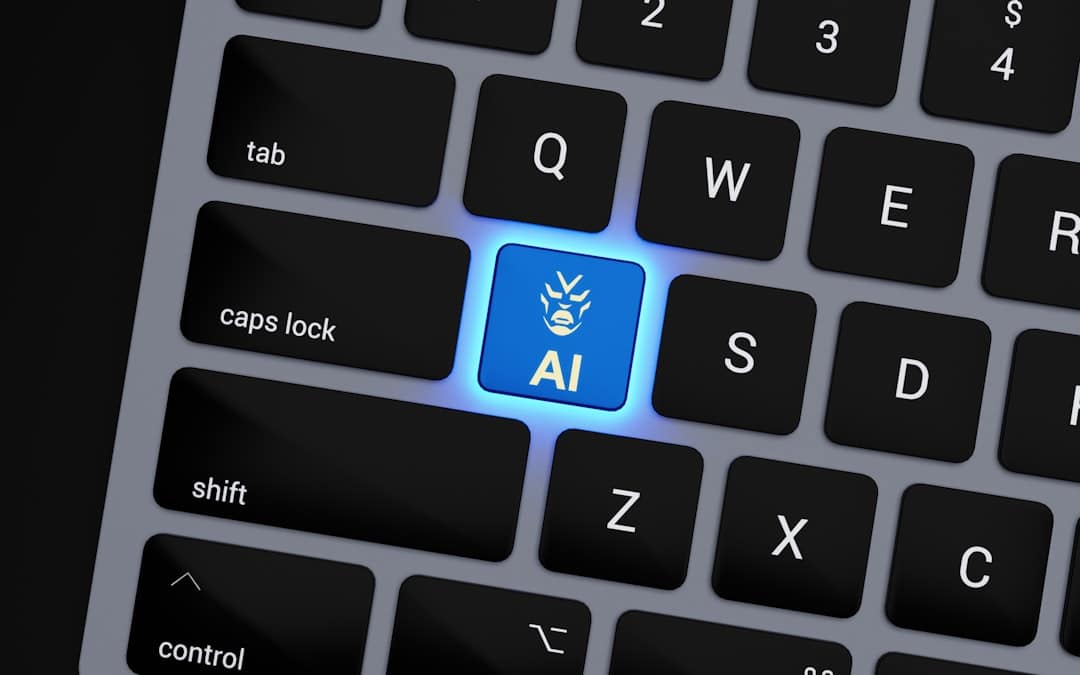Language Generation AI, also known as natural language generation (NLG), is a branch of artificial intelligence that focuses on the automatic generation of human-like language. This technology uses algorithms and data to produce coherent and contextually relevant text, mimicking the way humans communicate. NLG systems analyze and interpret structured data and then transform it into natural language, such as written narratives, reports, summaries, and more.
One of the key components of language generation AI is the ability to understand and interpret data in order to generate meaningful and coherent language. This involves processing and analyzing large amounts of structured data, identifying patterns and relationships within the data, and then using this information to generate human-like language. Additionally, NLG systems can be trained to understand different styles and tones of writing, allowing them to produce text that is tailored to specific audiences or purposes.
Language Generation AI has the potential to revolutionize the way we create content, automate repetitive writing tasks, and provide valuable insights from data in a more accessible and understandable format. It has the ability to transform structured data into human-like language, making it easier for people to understand and interpret complex information. This technology has a wide range of applications across various industries, from journalism and marketing to healthcare and finance.
By leveraging NLG, organizations can streamline their content creation processes, improve communication with their audience, and gain valuable insights from their data in a more efficient and effective manner.
Key Takeaways
- Language Generation AI involves the use of algorithms to generate human-like language and text.
- Applications of Language Generation AI include chatbots, content generation, language translation, and personalized recommendations.
- Benefits of Language Generation AI include increased efficiency, personalized communication, and improved customer experience.
- Challenges and limitations of Language Generation AI include potential biases, lack of human touch, and the need for large amounts of training data.
- Future developments in Language Generation AI may include more advanced natural language processing, improved context understanding, and better language generation models.
Applications of Language Generation AI
Journalism and News Reporting
Language Generation AI has a significant impact on the field of journalism, where it is used to automatically generate news articles, reports, and summaries based on structured data. This enables news organizations to quickly produce content on a large scale, covering a wide range of topics and events.
Marketing and Personalized Content
In the marketing industry, language generation AI can be used to create personalized content for targeted audiences, such as product descriptions, email campaigns, and social media posts. By leveraging NLG, marketers can automate the process of creating engaging and relevant content, saving time and resources while reaching a larger audience.
Healthcare and Finance: Streamlining Documentation and Reporting
In the healthcare sector, NLG can be used to generate patient reports, medical summaries, and other documentation based on electronic health records and other medical data. This helps healthcare professionals streamline their administrative tasks and improve the accuracy and consistency of their documentation. Similarly, in the finance industry, language generation AI can be used to automatically generate financial reports, investment summaries, and market analysis based on financial data, enabling financial institutions to provide timely and accurate information to their clients and stakeholders.
Overall, language generation AI has the potential to transform the way content is created and communicated across various industries, improving efficiency, accuracy, and accessibility.
Benefits of Language Generation AI

Language Generation AI offers a wide range of benefits across different industries. One of the key benefits is the ability to automate repetitive writing tasks, allowing organizations to produce content at scale without sacrificing quality. NLG systems can quickly generate large volumes of text based on structured data, saving time and resources for content creators.
Additionally, language generation AI can improve the accessibility of complex information by transforming structured data into human-like language. This makes it easier for people to understand and interpret data, leading to better decision-making and communication. Furthermore, NLG can help organizations gain valuable insights from their data by presenting it in a more understandable format.
By automatically generating reports, summaries, and narratives based on data, organizations can identify patterns, trends, and relationships within their data more effectively. Overall, language generation AI has the potential to improve efficiency, accuracy, and accessibility in content creation and communication across various industries.
Challenges and Limitations of Language Generation AI
| Challenges and Limitations | Description |
|---|---|
| Data Quality | The quality of input data can significantly impact the accuracy and coherence of language generation AI. |
| Ambiguity | |
| Cultural Nuances | |
While language generation AI offers many benefits, there are also challenges and limitations that need to be addressed. One of the main challenges is ensuring the accuracy and coherence of the generated text. NLG systems need to be trained on large amounts of high-quality data in order to produce accurate and contextually relevant language.
Additionally, they need to be able to understand different styles and tones of writing in order to generate text that is tailored to specific audiences or purposes. Another challenge is the potential for bias in the generated text. NLG systems can inadvertently perpetuate biases present in the training data, leading to unfair or inaccurate representations of certain groups or topics.
It is important for organizations to carefully monitor and address bias in language generation AI in order to ensure fair and accurate communication. Furthermore, there are limitations in the ability of NLG systems to understand and interpret complex or ambiguous information. While they excel at processing structured data and generating coherent language based on this data, they may struggle with more nuanced or subjective content.
Overall, addressing these challenges and limitations is crucial for maximizing the potential of language generation AI while ensuring ethical and accurate communication.
Future Developments in Language Generation AI
The future of language generation AI holds many exciting possibilities for further advancements in the field. One area of development is improving the accuracy and coherence of generated text through more advanced algorithms and training techniques. By leveraging deep learning models and large-scale training data, NLG systems can become more adept at understanding and interpreting complex information in order to produce more accurate and contextually relevant language.
Another area of development is addressing bias in language generation AI. By implementing fairness and bias detection techniques, organizations can ensure that NLG systems produce fair and accurate representations of different groups and topics. This involves carefully monitoring training data for biases and implementing measures to mitigate bias in the generated text.
Furthermore, future developments in NLG may focus on improving the ability of systems to understand and interpret more nuanced or subjective content. By incorporating advanced natural language processing techniques, NLG systems can become better equipped to handle ambiguous or complex information in order to produce more nuanced and contextually relevant language. Overall, future developments in language generation AI have the potential to further improve the accuracy, fairness, and nuance of generated text while expanding its applications across various industries.
Ethical Considerations in Language Generation AI

Fairness and Accuracy in Generated Text
One key consideration in language generation AI is ensuring fairness and accuracy in the generated text. NLG systems have the potential to perpetuate biases present in the training data, leading to unfair or inaccurate representations of certain groups or topics. It is crucial for organizations to carefully monitor and address bias in language generation AI in order to ensure fair and accurate communication.
Transparency in the Use of NLG Systems
Another ethical consideration is transparency in the use of NLG systems. Organizations should be transparent about the use of language generation AI in order to build trust with their audience. This involves clearly communicating when content has been generated by an NLG system and providing opportunities for feedback or clarification.
Privacy Considerations in NLG Systems
Furthermore, privacy considerations are important when using NLG systems to generate text based on sensitive or personal data. Organizations need to ensure that they are handling data responsibly and ethically when using NLG for content creation or communication.
Responsible Use of Language Generation AI
Overall, addressing these ethical considerations is crucial for ensuring that language generation AI is used responsibly and ethically across various industries.
Implementing Language Generation AI in Business
Implementing language generation AI in business offers many opportunities for improving efficiency, accuracy, and accessibility in content creation and communication. One key area where NLG can be implemented is in marketing, where it can be used to automate the process of creating personalized content for targeted audiences. By leveraging NLG for product descriptions, email campaigns, social media posts, and more, marketers can reach a larger audience while saving time and resources.
Another area where NLG can be implemented is in data analysis and reporting. By using NLG systems to automatically generate reports, summaries, and narratives based on structured data, organizations can gain valuable insights from their data in a more understandable format. This can help improve decision-making and communication within the organization.
Furthermore, NLG can be implemented in customer service to automate responses to common inquiries or provide personalized recommendations based on customer data. This can help improve customer satisfaction while saving time for customer service representatives. Overall, implementing language generation AI in business has the potential to streamline content creation processes, improve communication with customers and stakeholders, and gain valuable insights from data in a more efficient manner.
If you’re interested in the potential impact of AI and language generation in virtual worlds, you may want to check out this article on challenges and opportunities in the metaverse: ethical considerations. It discusses the ethical implications of AI and virtual environments, which is a relevant topic when considering the use of language generator AI in virtual worlds.
FAQs
What is a language generator AI?
A language generator AI is a type of artificial intelligence that is designed to generate human-like text based on a set of input parameters. It can be used to create natural language content such as articles, stories, and dialogue.
How does a language generator AI work?
A language generator AI works by using machine learning algorithms to analyze and understand patterns in human language. It then uses this understanding to generate new text that is similar to human-written content.
What are the applications of language generator AI?
Language generator AI can be used in a variety of applications, including content creation, chatbots, virtual assistants, and language translation. It can also be used to automate the writing of repetitive or routine tasks.
What are the benefits of using a language generator AI?
Some of the benefits of using a language generator AI include increased efficiency in content creation, the ability to generate large volumes of text quickly, and the potential to improve the quality and consistency of written content.
Are there any limitations to language generator AI?
While language generator AI has made significant advancements, it still has limitations in terms of understanding context, tone, and nuance in language. Additionally, it may struggle with generating highly creative or original content.











Leave a Reply